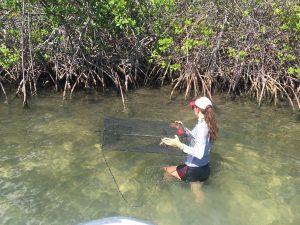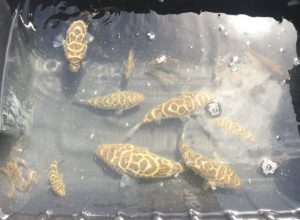
We studied the use of mangrove habitat by juvenile fish in a marine protected area in the U.S. Virgin Islands. Our goal was to compare the current fish community to results from 25 years ago. We found that juvenile fish are more abundant, but with lower diversity of species, now compared to 25 years ago. This study helps understand the role of this protected area in supporting fish populations, by providing critical habitat for juvenile fish.
Why We Care
Survival of juvenile fish is critical to supporting adult fish populations, which are important recreationally, commercially, and ecologically in the U.S. Virgin Islands. In many areas, mangroves serve as a nursery habitat for juvenile fish. However, the role of mangroves as nursery habitat in Salt River Bay National Historical Park and Ecological Preserve has not been assessed in 25 years, and thus merits re-investigation. Understanding how this protected area functions in promoting survivorship of juvenile fish is critical in determining its influence on local adult fish populations.
What We Did

We partnered with the National Park Service and the U.S. Virgin Islands Department of Planning and Natural Resources to assess the juvenile fish assemblage in Salt River Bay National Historical Park and Ecological Preserve using traps deployed in mangrove habitats. Juvenile fish were sampled every other month for a year. We compared our results to a study in Salt River Bay 25 years ago to assess how the community has changed over time.
What We Found
We found that juvenile fish in the mangroves of Salt River Bay are 3-7 times more abundant now than 25 years ago. However, there has been a 30-50% decrease in diversity between these two time periods. These changes in the fish community in time may be related to natural variability in juvenile fish recruitment, environmental influences, hurricane disturbance, and declines in adult fish populations.
Benefits of our Work
Our work will help understand how this protected area functions in supporting fish populations by providing critical habitat for juvenile fish. It will also help us understand how 25 years of impacts, such as hurricanes, development, and restoration, influence juvenile fish assemblages.
Next Steps
This project is completed.
